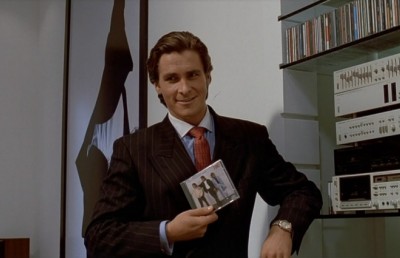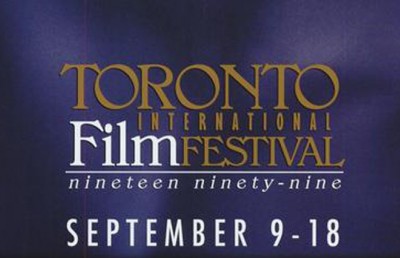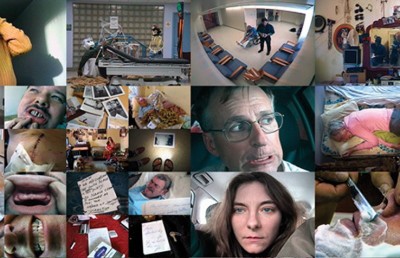Buster Keaton Rides Again
A major retrospective of cinema's comedic giant Buster Keaton
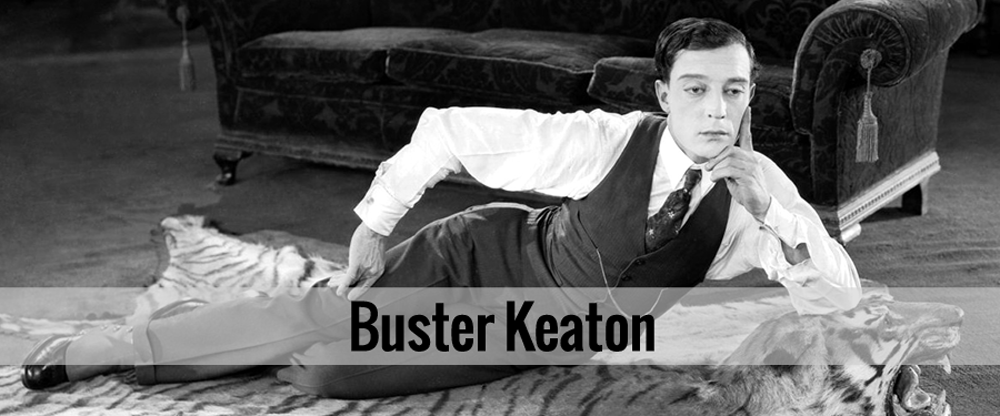
From July 12 to 30 La Cinémathèque Québécoise, in conjunction with le Festival Juste pour rire (Just For Laughs), will be featuring a major retrospective of cinema’s comedic giant Buster Keaton. The retrospective includes 13 shorts, 11 features, and a French film by Pierre Étaix that is a homage to American silent comedy, Le Soupirant. Although all of the Keaton films being shown are now available in exemplary home viewing formats (DVD, LD), La Cinémathèque has scored a major coup by procuring 35mm prints of all the films. Nothing beats viewing Keaton’s comic brilliance in splendid 35mm with live piano accompaniment.
There is little question that of all the great silent comedians, Keaton holds up amongst the best today. A large part of this is Keaton’s inventive visual style. But the Keaton character also has a lot to do with his still feeling modern to a contemporary audience. All the great silent comedians matched their visual style (gags, camera and cutting) to their personas. And all the great comedians had identifiable characters. Comedians like Harold Lloyd and Charlie Chase were closest to what you could call normal, realistic people. Much of their humor consisted of domestic entanglement (Chase) or social betterment (Lloyd). Lloyd was the comedian who best fitted the social zeitgeist of America in the 1920’s, and for this probable reason was the most successful commercially of his day. Characters like Laurel and Hardy, Larry Semon, Lupino Lane, and Harry Langdon roamed precariously on the line between believability (wanting to be part of ‘society’) and pure make-believe. Which is why they were the comedians most admired and discussed by the Surrealists. And no comedian feels more surreal today that Langdon’s man-child ‘baby dope fiend’ (as James Agee once called him). Chaplin was the universal underdog who tried to become part of the social machine, and had more than enough the skills to do so, but in the end preferred the view from outside. In a sense he was like the classic gunfighter who has the skills necessary to making society advance but is excluded by the society because of those very same skills. Chaplin was too inventive, quick, and clever to be part of the social mainstream. Chaplin, as his biographer Robert Payne called him, was the Great God Pan. Pan being Greek for ‘everything,’ and by necessity, placed Chaplin beyond the universal human quality he adroitly represented. Keaton was something altogether different. Principally because, right from the start, he was the cinematic modernist who played with character stereotypes and understood the inner workings of cinema.
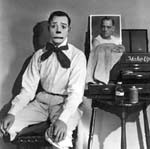
Keaton’s attitude was one of metaphysical stoicism. He adjusted to the world around him – men, women, machines, nature – simply because they were there, not because he wanted to belong or conquer. Keaton was just as happy with a train (The General) or horse (Go West) than with his requisite romantic lead. In a piece that single-handedly rekindled critical interest in silent comedy, “Comedy’s Greatest Era” (1958), James Agee said of Keaton: “Keaton worked strictly for laughs, but his work came from so far inside a curious and original spirit that he achieved a great deal more.” The Keaton character seemed to possess an internal design. Which is perhaps why while all the other great comedians took time to find the character that best suited them, Keaton was Keaton from the very first moment he walked into the frame in Arbuckle’s The Butcher Boy (1917).
Contemporaneously with silent cinema, at the turn of the century, the French philosopher Henri Bergson wrote what is still the classic monogram on comic theory, Le Rire (Laughter, 1900). Bergson was reacting to the encroaching industrialisation in all walks of society (economics, philosophy, science, and communication, art). His writing was a reaction to the dehumanising tendencies in the late 19th century, early 20th century (what he called the “mechanisation of thought”). The central comic image Bergson develops is “the mechanical encrusted upon the living” as a basis or leitmotif that veers off in several directions to encompass human behaviour, actions, situations and social customs. For example, an awkward piece of clothing is restrictive to the body as a formal dinner is to social behaviour. So when someone acts, behaves or gives the impression of “the mechanical encrusted upon the living”, they provoke laughter in those around them. The classic Bergsonian comic character being the absentminded person who walks into a wall because he is too caught up in a pretty woman walking by. According to Bergson comedy serves a social function. We laugh when someone acts inappropriately (i.e. mechanically), and our laughter is an attempt to suppress non-conformity and unproductive behaviour. Our laughter becomes a social gest that corrects unproductive behaviour (i.e. absentmindedness, repetitive action).
Although Bergson’s theory does not explain why we laugh, his central image of the mechanical encrusted upon the living became a fountainhead for silent comic structure. In a sense Bergson laid the theoretical groundwork for what would become a central folly for silent comedy. Keaton was, in most senses, the Bergsonian comedian par excellence. Keaton loved machines, both big and small. Witness the ocean liner in The Navigator, the cinema projector in Sherlock Jr., or the train in The General. One of the first things Keaton did as a novice filmmaker was to take apart a film camera and put it back together again. In order to understand cinema he had to literally understand the minute mechanics of the cinema apparatus. In this same sense Keaton adapted himself to the modern world around him. At times he would cause laughter by becoming the classic Bergsonian absentminded character. Much of the humor in The General is of this order, with his Johnny character so blinded by his inattention, his single-mindedness (appropriately enough for The General, his ‘one-track mind’) that he misses the obvious around him. But when his mind and body tapped into the mechanics around him, like the moment when he becomes a human pendulum to save the heroine from going over a fall in Our Hospitality, we marvel at his ingenuity and adaptability.
This is what separated Keaton from his peers, most strikingly Charlie Chaplin. For where Chaplin makes the world adapt to him, Keaton adapts to the world around him. We see this in Chaplin right from the beginning of his film career. In an early Keystone short, Tango Tangles (1914), there is an inconsequential moment which typifies Chaplin’s relation to the world. In order not to fall, a slightly inebriated Chaplin pulls a table toward himself so that he can lean on it. This is something Keaton would never do. Rather he would have found a way to adjust to the gap between him and the table (interestingly enough, Keaton never resorted to the classic drunk character, something Chaplin did frequently).
In a television series called Funny Business British comedian Rowan Atkinson, playing the host as a stodgy Oxford-like professor, pontificates that Charlie Chaplin is no longer funny to a contemporary audience because he is too cute and too romantic. Instead he offers the world-weary cynicism of W.C. Fields as being still funny today. One could say the same holds for Keaton, with his technological and mechanical adaptability replacing Field’s cynicism. In Noel Carroll’s unpublished PhD thesis on Keaton he discusses Keaton as a throwback to a lost work culture, the pre-industrial period when a person had to be a jack-of-all trades, adroit at using their hands to construct and create serviceable and pragmatic life objects. We see this incredible ability to adapt to the environment throughout Keaton’s oeuvre. Like, for example, the way his spoiled, sheltered millionaire character in The Navigator quickly adapts to life for two on a ocean liner built for hundreds.
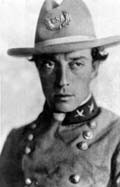
The retrospective includes The NFB’s The Railrodder, producer/director Gerald Potterton’s best known work that stars a 70 year-old Keaton. This charming two-reeler reunites Buster Keaton with his great love of the outdoors and trains. Potterton tries to capture the Keaton style by maintaining a constant sense of movement in the frame and constructing several gags in long and extreme-long shot. One of the funnier gags has the camera inside a teahouse framing a table of people in the foreground and a stoic Keaton cutting across the extreme background of the frame right to left. Naturally at Keaton’s advanced age the film lacks the acrobatic dynamism and abrupt changes in tempo so vital to classic Keaton. There is still a nice sense of deja vu watching Keaton perform in The Railrodder, like recognizing the slowed down yet familiar movements of a once-great athlete. Compulsory viewing alongside The Railrodder is the excellent Canadian documentary on its making, Buster Keaton Rides Again (John Spotton, 1965), also featured in the retrospective. There is no reason for film lovers, students, and cinephiles of all stripes not to make it down to La Cinémathèque Québécoise for this comic extravaganza. Keaton once said that comedy was a serious business. And perhaps no one was more serious about comedy than Keaton. So treat yourself to some seriously funny cinema taking place at la Cinématheque québécoise from July 12 to July 30 www.cinematheque.qc.ca.
Films Screened:
Buster Keaton Rides Again 1965 The Balloonatic 1923 Battling Butler 1926 The Boat 1921 The Cameraman 1928 College 1927 Coney Island 1917 Convict 13 1920 Cops 1922 Daydreams 1922 The Electric House 1922 The Frozen North 1922 The General 1926 Go West 1925 The Navigator 1924 Our Hospitality 1923 The Playhouse 1921 The Railrodder 1965 Saphead 1921 Seven Chances 1925 Sherlock Jr. 1924 Le Soupirant 1962 Steamboat Bill Jr. 1928 The Three Ages 1923



